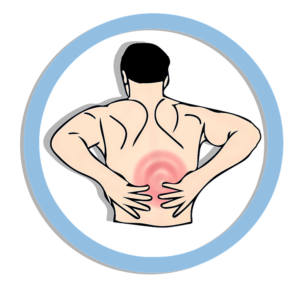Back Spasms – Causes, Symptoms and Treatment
Do you suffer from back spasms? Back muscle spasms can be painful and debilitating. In this article we’ll take a closer look at what causes back spasms and how they can be treated. 
What Causes Back Spasms?
A spasm is an:
“a sudden involuntary contraction of a muscle or group of muscles”1.
Muscle spasms can be caused by weak, injured, or inflamed muscles. In addition, dehydration or any medical condition that reduces blood flow to the muscles (ie: peripheral artery disease)2 can make someone more prone to muscle spasms.
Muscle spasms that occur around the spine are also called back spasms. Strenuous exercise, sudden motions, repetitive activities like shoveling snow, and exercise in a hot environment can all put strain on the muscles and lead to back spasms2,3.
What Does a Back Spasm Feel Like?
A back spasm can feel like a tightening, pulling or twitching of the muscles in your back. With some muscle spasms the muscle will be hard to the touch or show a visible twitching.4
The intensity and duration of each muscle spasm can vary.
A back spasm involving the piriformis muscle in the lower back may also lead to leg pain called sciatica5 (pain radiating down one or both legs as a result of pressure on the sciatic nerve).
Back Spasm Relief
If you get back spasms what are some options for relief?
Treatment for back spasms can vary but rest and NSAID’s can help reduce the pain associated with back muscle spasms.
Ice, or hot and cold therapy, can also be an effective treatment for muscle spasms.
In addition, pressure on the muscle can help ease the spasm. When the muscle is tight, place pressure on the area with your fingers or by massaging the area.6
After the initial back spasm relief, physical therapy can be used long term to stretch and strengthen muscles to prevent future occurrences. Following general rules of thumb like drinking plenty of water, practicing proper lifting techniques and stretching before strenuous activity can all help minimize back spasms.
References
